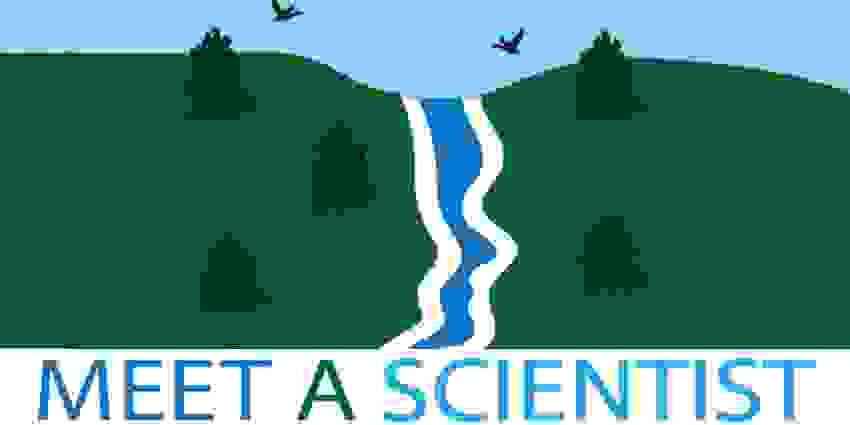Alaska is home to some of the largest animals in North America, such as moose, caribou and muskoxen. While there, Dr. Perry Barboza spent a lot of time thinking and working on these iconic species that roam the tundra and forests.
Barboza moved from Alaska to College Station in August 2015 to serve as a professor in Texas A&M University’s Department of Wildlife and Fisheries Sciences and was also named to a five-year appointment as the endowed Boone and Crockett Chair in Wildlife Conservation Policy. Barboza’s curiosity about wild mammal populations continued to drive his research after coming to Texas.
Barboza studies the ways in which wildlife species overcome challenges in obtaining enough food and water to survive and reproduce, while adapting to disruptions in their environment. Through his findings, he attempts to provide information to policymakers on ways of better managing both wildlife populations and natural resources.
“We’re looking at whether an animal is able to tolerate the next challenge, such as a change in nutrition or disease,” he said. “Some of these nutritional indicators can be used to suggest that this animal could be predisposed to the next disease or challenge — the next challenge of a drought or anything that will increase its demands in relation to its supplies.”
To understand how different animals respond to habitat changes, Barboza examines both “top-down and bottom-up” factors that influence wildlife populations. “Bottom-up” refers to inputs that cause populations to grow, mainly food and water, he said. Top-down factors, such as habitat disturbances, predators and diseases, directly kill animals or make it more difficult for them to survive.
While many stakeholders tend to blame wildlife population declines on only one top-down issue, Barboza said he strives to take a comprehensive, cumulative approach in understanding correlations between habitat disruptions and animal populations.
“Some people think if you get rid of all the predators, everything will be fine,” he said. “And that’s not always true, because if there are no predators, there could still be drought. But there’s also bad winters and bad summers that will also cause problems. Sometimes just removing the predators doesn’t actually fix it, because there are other things driving that system.”
Barboza has worked in many environments, from the marshes of Maryland to the coast of Nova Scotia, to understand how animals manage food supplies and demands in particular environments. For example, he studied bears in Washington state and how they prepare their bodies for hibernation by storing fats and proteins.
“Most of the research I’ve done was how animals work in terms of meeting supplies and demands,” he said. “With bears, I wanted to know how long they could survive during hibernation and still maintain their bodies.”
Similarly, in the deserts of Nevada, Barboza studied tortoises to understand how they could tolerate three months without food and water each year. Although their environments differed vastly, the bears and tortoises faced related challenges of matching food supplies with their bodies’ demands.
“You can die from a lot of different things, but you won’t grow if you don’t eat. So the simple thing is, if there’s no supply, there’s no growth,” he said. “So that’s where we start — is there enough supply? What are the different problems in turning this food supply into more population?”
Another question that drives Barboza’s research is understanding how animals respond to or tolerate uncertain conditions, or conditions with unpredictable demands or supplies. For example, white-tailed deer in Texas may experience drought or extreme winter weather during pregnancy in different years, he said.
“It’s not certain whether you’re going to have a rough winter on the Post Oak Savannah from one year to the next,” he said. “So a deer may put on a nice, thick coat to keep itself warm, and it won’t be very useful. So actually there are some very surprising things about white-tailed deer dying at very high rates in just mild cold snaps in Texas — conditions that would not kill them in Michigan.”
Barboza said most of his research is focused on large mammals, but he has studied reptiles and birds, namely waterfowl. He studied the physiological responses of black ducks to food shortages, mainly in Chesapeake, Maryland. The birds tolerated food shortages by restoring their bodies quickly but would not breed until food was regularly provided, he said.
“Common mallards and black ducks look the same, they have the same sort of breeding structure, they have the same patterns,” he said. “But black ducks are disappearing, and we think that is related to their response to risk.”
Understanding animal responses to environmental disruptions is critical to implementing wildlife management policies, Barboza said. To help evaluate proper management strategies, Barboza tries to find body and nutritional indicators in animals that will help predict if, and when, a population crash will occur.
“We are trying to find the tipping point in populations, where you start to see thousands of animals disappear,” he said. “The issue then becomes what are the sort of metrics that we need to know to anticipate a crash, so we can look for them in wildlife populations.”
Reflecting on his work, Barboza said he most enjoys the discovery aspect of research. “You write a project, and you say this is going to happen, or why we should know this particular fact, but truth is, scientists really want to be surprised,” he said.
“Sometimes, I think the most interesting things are when animals do things we never thought they could do. Sometimes, we want to be proved wrong.”
For more information about Barboza’s work, see his webpage. Read this AgriLife Today article to learn more about the endowed Boone and Crockett Chair.

